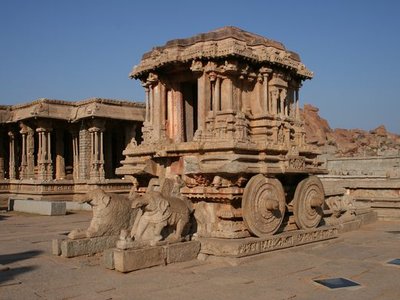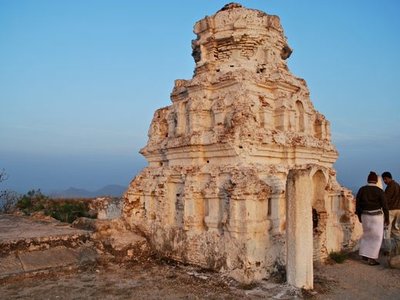Hampi


On the boulder-strewn banks of
the Tungabhadra River in Karnataka lie the ruins of Hampi, where the capital of the Vijayanagara Kingdom once stood. From 1336 to its fall in 1565, when it was sacked by Muslim invaders from the North, this was the Hindu capital of Vijayanagara Empire in Southern
India
. At that time, archaeologists estimate the city held about 250,000 people, which would have made it the largest city in the world.
The site at Hampi is home to countless architectural wonders. As in other ancient, abandoned cities—like
Palmyra
or Teotihuacan—it is possible to stroll down the overgrown paths from building to building and imagine the splendid metropolis that Hampi once was. But in these famous ruins, one must also remember that it was not even 500 years ago (quite recent, archaeologically speaking) that this metropolis was bigger than that of
Rome
,
Baghdad
or Istanbul.
The Vijayanagar style of architecture combined the Islamic style popular in Northern India with more Eastern elements, creating a new, unique mode that archaeologists call Indo-Saracenic architecture. The result: buildings that feature the stunning geometrical patterns and important structural advances made popular by Islamic builders, but also contain beautiful carvings and sculptures of Hindu gods and other important mythical figures.
Besides the magnificent Virupaksha Temple—composed of successively smaller stories so that from below, the building seems to stretch unfathomably high—there are several fascinating structures not to miss, including the Lotus Mahal, the geometrically intricate Stepped Tank, and the iconic stone chariot (pulled by little stone elephants). Be sure to take in the banks of the rushing river, with its incredibly large and precariously positioned boulders.
Hampi was made a Unesco World Heritage Site in 1986.